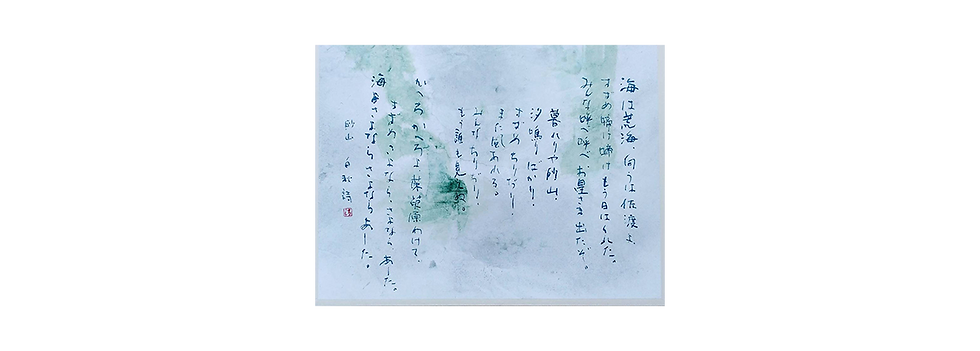Japanese Calligraphy in the Asuka Period – When Japan First Encountered the Power of Written Words
- 清水 芳樹
- 5月24日
- 読了時間: 3分

In the long and rich history of Japan, few cultural shifts were as profound as the arrival of Chinese characters. More than just the introduction of writing, it marked the birth of what would eventually become the refined and deeply spiritual art of Japanese Calligraphy.
This transformational moment occurred during the Asuka Period (late 6th century to around 710 AD), an era known for vibrant international exchange and the foundational development of early Japanese culture.
The Arrival of Kanji – A Cultural Revolution
During the Asuka Period, Japan saw an influx of influences from the Korean Peninsula and China. The arrival of Buddhism in 538 AD (or 552 AD, according to some records) brought with it more than just religious ideas—it introduced kanji, Chinese characters, through the kingdom of Baekje in Korea.
Until then, the Japanese had no writing system of their own. The first contact with a fully developed script must have been awe-inspiring. At first, kanji was used primarily in religious contexts, especially to transcribe Buddhist sutras and doctrines. Over time, its use expanded to political and diplomatic documents, becoming essential to the emerging state apparatus.
Early Evidence of Calligraphy in Japan
Some of the earliest and most remarkable examples of kanji use in Japan come from archaeological discoveries:
The Inariyama Sword (471 AD), discovered in Saitama Prefecture, bears an inscription of 115 kanji characters. Carved in beautiful form, it offers a rare glimpse into the early use of Chinese writing on the archipelago.
The Shaka Triad Halo Inscription at Hōryū-ji Temple in Nara, dated to 623 AD, is another key artifact. This engraving, executed in elegant kaisho (standard script), records prayers and the religious motivations behind the sculpture’s creation. It's a testament to how swiftly Japanese artisans embraced and adapted the aesthetics of Chinese calligraphy.
The Tago Stele in Gunma Prefecture, dated to 711 AD, reflects a more evolved style. Written in a semi-cursive script influenced by China’s legendary calligrapher Wang Xizhi, the inscription reveals that advanced calligraphic techniques had already taken root in Japan.
Kanji as a Tool of Authority and Belief
In the Asuka Period, kanji was not yet a fully internalized part of Japanese identity. It remained foreign, even mysterious. Yet its role was undeniably powerful: writing became a symbol of political authority and a vehicle for spreading Buddhist philosophy.
To write was to wield influence—whether religious, governmental, or cultural. Calligraphy, even in its earliest stages, was more than text; it was a mark of legitimacy, a tool for diplomacy, and a medium for spiritual devotion.
The Birth of a Unique Aesthetic
Though early Japanese scribes were still mastering the foreign script, their distinct aesthetic sensibility was already beginning to emerge. This slow and deliberate process of adaptation would eventually blossom into the highly refined and uniquely Japanese art form we know today as Shodo, or Japanese Calligraphy.
Conclusion: A Humble Beginning, A Profound Legacy
The Asuka Period was the starting point of Japanese calligraphy. Imagine the sense of wonder the Japanese must have felt upon seeing written language for the first time—the mysterious beauty of kanji characters carved into bronze, stone, or steel. Today, as we write with pens or type on screens, those characters still carry the weight of that first encounter.
Understanding the origins of Japanese Calligraphy allows us to appreciate not just the artistry of brush and ink, but the cultural dialogue that made it possible. It is a story of fascination, adaptation, and the enduring desire to give form to thought.
Coming in Column #7: "The Kana Revolution – How Japan Created Its Own Script and Style."
Let me know if you'd like visuals, quotes, or references included, or if you’d like help turning this into web or newsletter format!
Experience Authentic Japanese Calligraphy.



留言